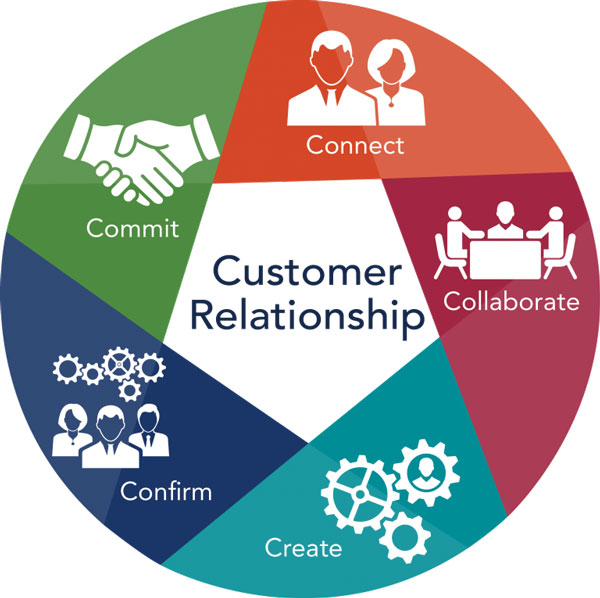Ever wondered what your customer’s journey is like when he walks into the store with all the products in the shop displayed in front of him? And how you could make the most of that opportunity no matter where he is coming from?
When a customer walks in to the store, as a salesperson, first and foremost, you have the power to facilitate the buying process by the selling tools you are trained with. A buyer, in most cases, will try out a few things before he/she arrives at a decision. Of course, many of them also know what they want to buy, in that case, it is a win-win situation for both the parties. However, even then, you as a salesperson can work on making your relationship with the buyer stronger.
So, there can be these results (one out of the three):
- He buys, or
- He goes to try other stores, or
- He postpones his decision to a later date
According to Ajay Bhootra, a renowned author, “Results of each step in a buying process are woven into uncertainties and unpredictability that determines a buyer’s decision making. Things are not simple. Plenty of research has gone into understanding customer’s decision-making process or his journey to decision making.”
So, when we talk about uncertainties and unpredictability, what can you do as a person who is selling something against these two big words. You can ensure that your customer appreciates you and the product. The idea is to tempt the buyer so much that he/she cannot resist and ultimately, he must feel connected to you. It should be like you know what is best for that person and you are confident!
In terms of optical products, you are selling ophthalmic lenses, contact lenses or a frame or a sunglass. So here’s what you need to focus upon:
Ophthalmic lens Know the medical condition/requirement. Suggest what is the best and nothing but the best.
Contact lens Offer the best, obviously. Look into the requirement very carefully and understand. Ensure that the wearer gets the best wearing experience at all times. Contact lenses are the most tricky ones and the customer will be reluctant to try it, as it is something you put into the eyes. So you have to know what you are selling and your skills of communication need to be at the maximum best!
Sunglasses This is a product which is mostly statement driven. A person buys a sunglass because they want their face to change. Make that happen. Make them look good. Get into their personal space, understand what they are looking for and bang! Give them what you got in the most compatible capacity.
After you have understood the mantra about what you are selling. You need to keep in mind a couple of stages that a buyer goes through in their journey towards buying. And this is what you need to keep in account:
“The customer’s mind is set when he/she enters the store. He/she must like what you present before they start appreciating it. This will lead them to select a product and finally land on a decision to buy.”
Now, these may seem challenging and the fact that as a salesperson you not only have to counter these steps and stages but also successfully make a sale. Quoting Mr. Bhootra here, “Generalising these stages is a great challenge and we grow only through challenges.”
That being said, let’s conclude the journey of a customer in three steps that can work for every salesperson ever:
Step 1:
State of mind: A customer may have an intention to buy, or simply check out the products and postpone the decision to another visit. He/she may be there because of previous good experience or he/she is just there because someone referred it to them.
Step 2:
Appreciation for you, your product and your company: The second step is when you engage the buyer to a level that they start appreciating you and the product you are offering. This begins when they start to connect with you and start selecting what they like.
Step 3:
Buying or temptation: The last step is quick mostly. He/she makes a purchase or becomes tempted to.
 The third step is what defines how good you made your case and whether a person could connect with what you and the product had to offer. You can always wish that they do make a purchase but even if they do not, ensure that whenever they wish to, it is you they turn up to. This always needs to be kept in mind as a salesperson that your primary objective is to make the sale but the aftersales experience matters the most. In terms of a person, who is not making a purchase, the comfort and connect you provide is of the most importance. As it gives you a customer who can come back to you. Always maintain a database or a record base that gives you the space to lure that customer back, the one that got away. It is all about relationship building, and it is the most vital.
The third step is what defines how good you made your case and whether a person could connect with what you and the product had to offer. You can always wish that they do make a purchase but even if they do not, ensure that whenever they wish to, it is you they turn up to. This always needs to be kept in mind as a salesperson that your primary objective is to make the sale but the aftersales experience matters the most. In terms of a person, who is not making a purchase, the comfort and connect you provide is of the most importance. As it gives you a customer who can come back to you. Always maintain a database or a record base that gives you the space to lure that customer back, the one that got away. It is all about relationship building, and it is the most vital.












